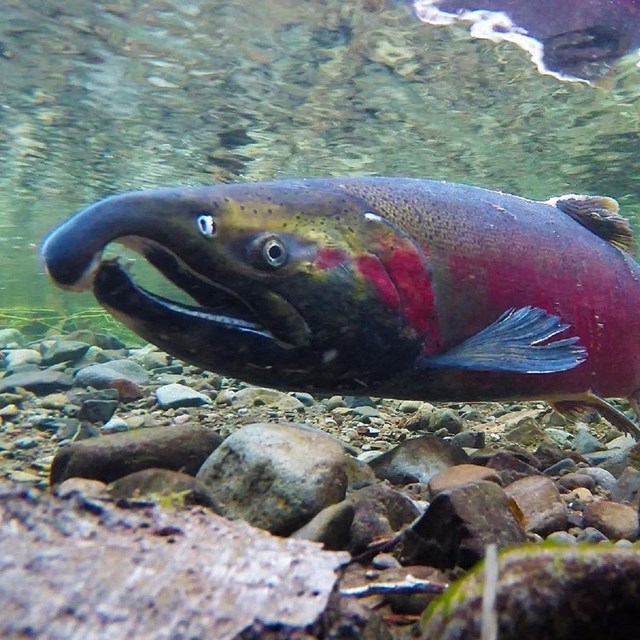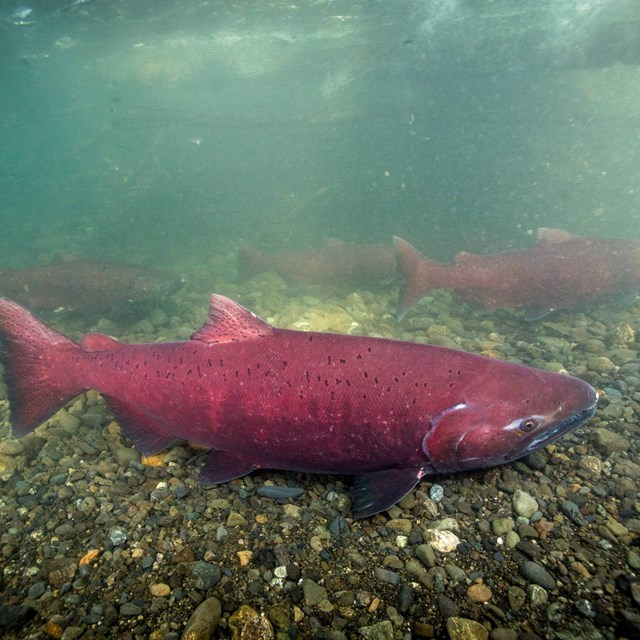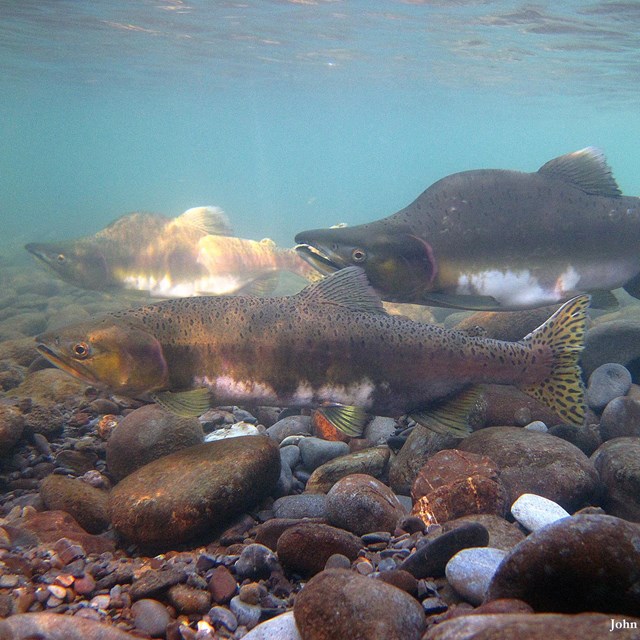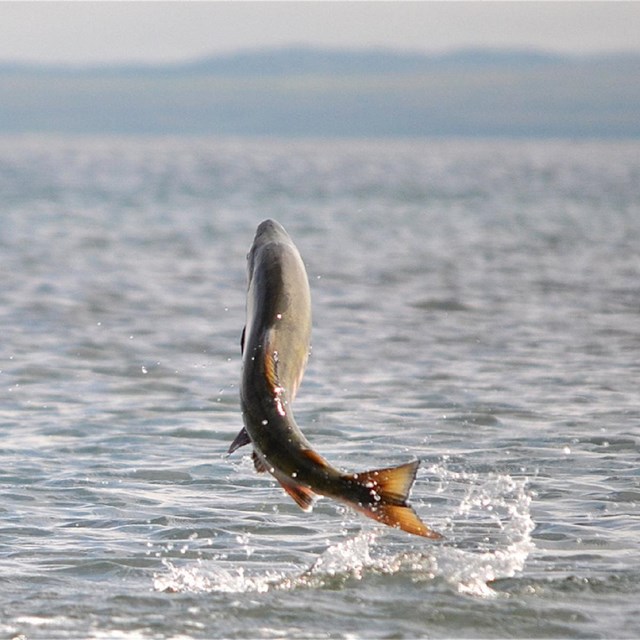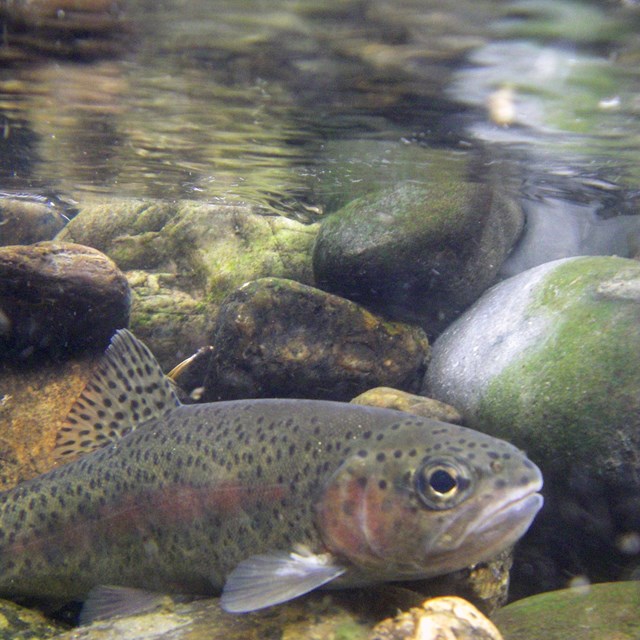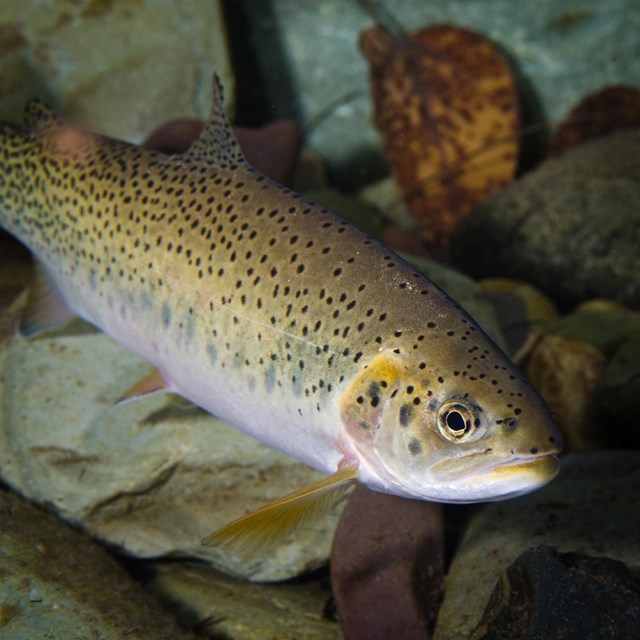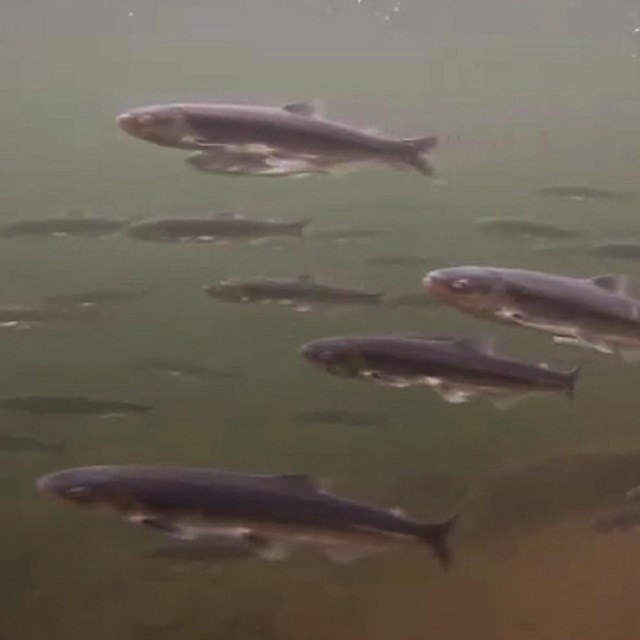
Five species of Pacific salmon (genus Oncorhynchus) frequent the fresh and salt waters of Glacier Bay National Park and Preserve: chinook, coho, sockeye, chum, and pink salmon. Several species of trout and char also spend time in the park: the coastal cutthroat trout, steelhead (coastal rainbow trout), and Dolly Varden char (genus Salvelinus). Eulachon (genus Thaleichthys), a type of smelt, are also found in park waters. For information on descriptions, abundance estimates, spawning run timing in freshwater or freshwater residency, and distribution among park and preserve streams for each of these anadromous species, visit the sections below. This online guide is intended to aid recreational anglers, wildlife viewers, and other interested persons in identifying some of the most numerous anadromous fish species within the park.
Anadromous Fish GlossaryThe lifestage of a salmonid between egg and fry. An alevin looks like a fish with a huge pot belly, which is the remaining egg sac. Alevin remain protected in the gravel riverbed, obtaining nutrition from the egg sac until they are large enough to fend for themselves in the stream.
Fish that live part or the majority of their lives in saltwater, but return to freshwater to spawn.
The act of salmon fry leaving the gravel nest.
A juvenile salmonid that has absorbed its egg sac and is rearing in the stream; the stage of development between an alevin and a parr.
The hooked jaw many male salmon develop during spawning.
Also known as fingerling. A large juvenile salmonid, one between a fry and a smolt. Displays vertical bands on its side called parrs.
A juvenile salmonid which has reared in-stream and is preparing to enter the ocean. Smolts exchange the spotted camouflage of the stream for the chrome of the ocean.
The material which comprises a stream bottom.
A fish that has completed spawning.


(yellow). This view excludes known information for the outer coast of Glacier Bay and the Dry Bay National Preserve. Run timing and distribution information for this publication came from the Glacier Bay Anadromous Streams Database (ASD). This database of fish observations in freshwaters within Glacier Bay National Park and Preserve is continuously updated by park fisheries staff. Observations in the database include sightings by visitors, researchers, and park staff. These range from simple qualitative sightings (e.g., species presence) to repeated, quantitative observations (i.e., where, when, how many) made by fisheries researchers. Some of these observations were made more than a half century ago! Graphical information on run timing came from information in the ASD. The data represent a relative average of fish abundance observed each month across all records for that species. Anadromous Streams Database information was also used to construct the distribution map included in this document. Limited information exists for most streams and species of anadromous fish within Glacier Bay National Park and Preserve because of the size, remoteness, and dynamic nature of this habitat. Dolly Varden, salmon, and trout colonize new stream habitat as glaciers recede. The loss of glacial ice from watersheds often influences stream temperature. As streamside vegetation develops, sediment loads decrease resulting in clear water and more stable conditions favorable to fish. Change is constant even within stream habitats. |
Last updated: February 9, 2018


